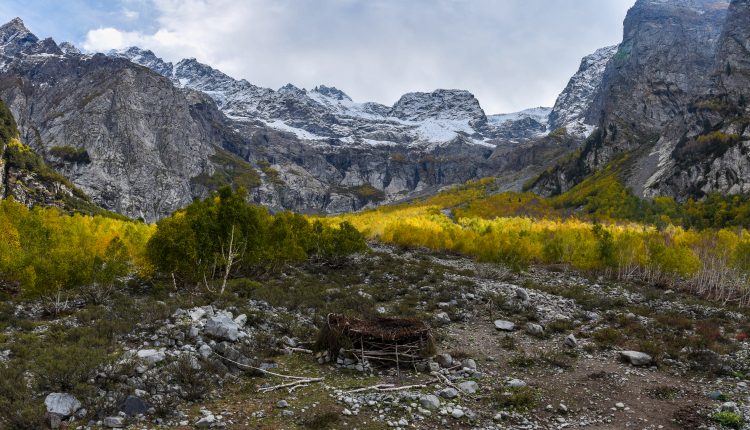The aim of this magazine is to connect the communities of Hindu Kush, Himalaya, Karakorum and Pamir by providing them a common accessible platform for production and dissemination of knowledge.
Mystery of the Hidden Valley: A Trek to Kandia Pass
For the past three years, I have been drawn back to a place of wild beauty and untamed serenity—the basecamp of Batin Peak. Nestled deep within the mountains, this rugged paradise feels like a hidden world untouched by time, where nature reigns supreme. It’s a land where roaring, cascading waterfalls thunder down from colossal glaciers, their icy waters carving through the rocky cliffs in a spectacular display of raw power. These falls merge into a lively stream that meanders through the valley, serenading the birch forest that stretches below—possibly the largest in all of Swat. In autumn, the forest transforms into a golden wonderland, with each birch tree bursting into a radiant yellow blaze, casting a warm, ethereal light over the rugged landscape like nature’s own lanterns guiding you through the wilderness.

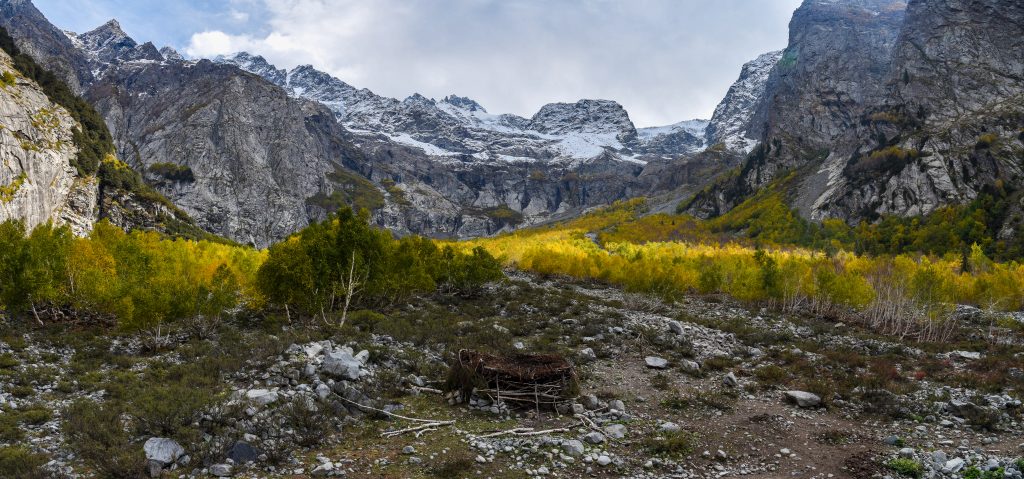


The basecamp is also home to the elusive black bear. On a cold autumn morning, I had a fleeting, heart-stopping encounter with one as it wandered near a patch of Quercus trees along the stream. The experience left me with a sense of awe and deep respect for the wilderness.

Each time I visited, I would look north, where a stream trickled down from a hidden valley. The mystery of what lay beyond gnawed at me. No one, as far as I knew, had shared photos or stories of what lay up there. What kind of landscape could it be? After months of grueling mountain work, my stamina was back, and I was ready for a challenge. This hidden valley felt like the perfect trek to satisfy my curiosity.

When a small holiday window opened, I jumped at the chance to explore. I contacted my usual trekking friends, but they were all busy. My elder brother Abrar, however, was ready. Together, we planned to leave early the next morning.
At 5 a.m., we set off, the road clear and the air cool. By 7 a.m., we had reached Kalam, stopping for breakfast before buying some provisions for the trek.
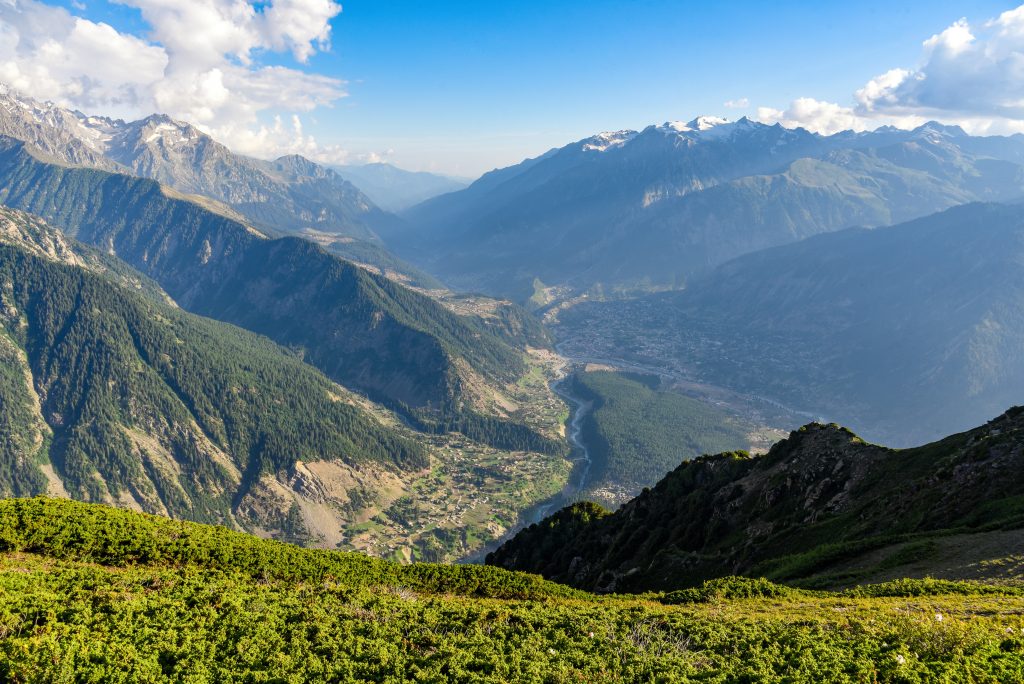
Matiltan was our starting point. Our excitement mounted as we left civilization behind and entered the wild.

Shortly after starting, we crossed paths with some local shepherds. Curious about the route ahead, we asked them about the terrain. One shepherd, Usman, had just descended from Kandia Pass, the area we were aiming to explore. His advice was blunt—he found the place “boring,” nothing but rocks and ice. Yet, to us, that only deepened the mystery. A place so desolate and hidden had to be explored.
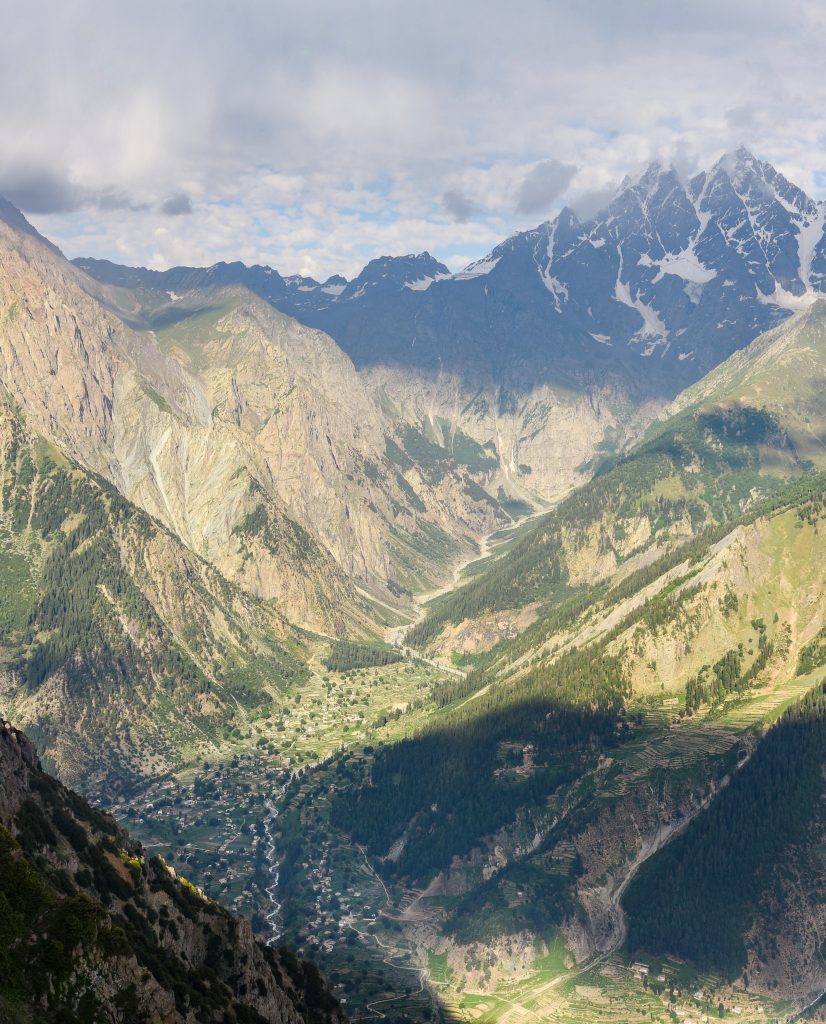
Not long after, we met another local shepherd, Haroot, who told us some of his fellow shepherds are still up there with their herds. He kindly told us to mention his name, assuring us they would welcome us as guests. Thanking him, we pressed on, more determined than ever to uncover the secrets of this “boring” place.
We pushed forward with a tight deadline—only two days to reach Kandia Pass and return. Our heavy backpacks made the trek more challenging than we anticipated, especially given our plan for just a single night stay. The weight slowed us down, but we were determined.
The route led us through an Oak Forest, a place that always sent a chill through me. It was here, in the stillness of the woods, where I had once encountered a black bear. Knowing that bears were in their hyperphagia period, aggressively preparing for hibernation, we couldn’t help but feel a bit anxious. Bears in this state are known to attack livestock and raid crops, making them unpredictable. As we entered the forest, we decided to hike close together, taking no risks in this dense, shadowy patch of trees.

Just as we were resting at the edge of the forest, two boys appeared, heading up to their mountain settlement where their family tended to cattle. After a brief introduction, we learned they were brothers. The elder one, Nazar, worked in Rawalpindi at a tandoor and had never visited the settlement. This was his first time, and his guide was his younger brother, a quick and nimble 12-year-old who moved with ease through the mountains.
We shared some chocolates with the boys, who seemed eager to continue their journey. Though we were slowed by our heavy packs, we told them they could go ahead without waiting for us. As we resumed our hike, we found ourselves catching up to them frequently. Nazar, unused to the altitude and pace, lagged behind his younger brother, stopping to rest after every short stretch.
In an attempt to help, Nazar offered to carry my rucksack. I hesitated at first, telling him I was well-accustomed to these mountains and didn’t mind the weight. But he insisted, so I let him take it. To my surprise, as soon as he took the pack, he started charging up the trail at a pace far too fast for the altitude. I called out, warning him that the weight would wear him out quickly if he didn’t slow down.
As predicted, after a short burst of energy, Nazar was winded. I took my rucksack back, reminding him that trekking in these mountains was no easy feat. We continued our journey together, sharing the quiet beauty of the landscape, the distant roar of waterfalls, and the sense of mystery that still lingered ahead.
From Matiltan to the birch forest, the trek was relatively easy, a gentle path that allowed us to move at a steady pace. However, as we entered the Oak patch, the terrain quickly turned steep, and it only grew steeper as the oak trees gave way to a thicket of Berberis bushes. The challenge of the ascent was softened somewhat by the Berberis plants, which were full of ripe berries. Every so often, I would stop, pluck a handful of the small, tart berries, and savor the brief refreshment they offered.
The sky was a perfect, cloudless blue, and the sun beat down relentlessly. At this altitude, the sun’s rays felt more intense, and we could feel the heat burning our skin, making us sweat through our clothes. Thankfully, a stream ran parallel to our route, and there were fresh springs along the way, allowing us to stay hydrated. The sound of rushing water accompanied us, a soothing presence in the midst of the sun’s harshness.
By 2 o’clock, we reached the summer settlement where Nazar’s family lived during the grazing season. Nazar’s father greeted us warmly, offering us a simple yet delicious meal of fresh cheese, homemade butter, and wheat bread. We sat by the stream, the water cold and refreshing as it flowed down from the glaciers of Batin Peak. After the meal, we were served tea, enjoying the quiet of the mountains, the only sounds being the distant bleating of sheep and the cascading waterfalls falling from higher peaks.
We had envisioned arriving at a lush, green meadow, but as we reached the settlement, reality set in—Usman had been right. The place was barren and rugged, a desolate expanse of moraine, with only the occasional small green patch struggling to break through the rocks. The shepherds’ huts were as simple as could be, constructed entirely from the surrounding stones, without the use of cement, mud, or wood. It was a narrow, closed-off area, hemmed in by high ridges on all sides, offering no sweeping views or open expanses to admire.
A sense of disappointment settled over us. This wasn’t the scenic vista we had hoped for. We turned to Nazar’s father, asking if there was any other place nearby that might offer the green, open landscape we sought. He nodded and pointed higher up the mountain, mentioning a place called Jabba—a meadow with a small pond and wide-open views of Batin Peak and its sister summits. A shepherd lived up there, he said, tending his herds.
But just as our hopes began to lift, the weather turned. Clouds rolled in, and a thick fog descended, shrouding the surroundings in a heavy, gray mist. The chance of seeing those wide-open views seemed to fade with the mist, as did our anticipation for what lay ahead.
We found the only small patch of green large enough to pitch our tent in this vast, rugged moraine-filled landscape. It wasn’t much, just enough for our tent, but it gave us a place to rest and plan for the day ahead. My elder brother prepared a hearty meal, and just as we were about to settle in, a shepherd named Taj Malook, who lived in the same settlement, kindly sent us rice and tea for dinner.
Taj Malook stopped by briefly, but his visit was clouded by worry. He explained that bears had killed four of his goats in recent days and that he was rushing to gather his herds for the night, fearing another attack. His anxiety hung in the air, a stark reminder of the wild and unpredictable nature of this place.
Later, Nazar paid us a visit, and we shared some laughs while recounting our trek so far. He too found the place rather dull, much like we did. But when we invited him to join us for the trek to Kandia Pass the next morning, he eagerly accepted. We made it clear that we would leave early, at 5 a.m., and told him to be ready, or we’d assume he wasn’t coming.
As night closed in, the clouds thickened, and a dense fog enveloped the area, making the surroundings feel even more isolated. After dinner, we crawled into our tent and settled down for the night, knowing we’d need to rise early for the next leg of our journey.
That night, the distant shouts of shepherds pierced the quiet, and in the morning, we learned that bears had once again attempted to attack the livestock. Thankfully, the shepherds managed to scare them off, but the threat had loomed large.
We woke early, as planned, still enveloped in thick fog. The sky was a blanket of heavy clouds, blocking any hope of a sunrise. My brother, as always, prepared a light breakfast, and we ate quietly, chatting about the poor weather. We hoped, perhaps a bit optimistically, that it would clear up and grant us the breathtaking views from Jabba. After all, what was the point of climbing all the way to the glacier beneath Batin Peak if everything would be shrouded in fog?

Nazar hadn’t shown up yet, and time was pressing, so we decided to leave without him, still hoping the weather might improve. The path toward Jabba and Kandia Pass was growing more difficult, narrower and steeper with every step. In some places, there wasn’t even a clear route—just loose stones and moraine where we had to make our own way, carefully placing each foot to ensure the next step was safe. The shepherds and their herds were still tucked away, hiding among the boulders, motionless in the cold, foggy morning.
Suddenly, a shout echoed behind us. Turning around, we saw Nazar running toward us, breathless and drenched in sweat. He yelled for us to wait, and when he finally caught up, his heart was racing, and he threw his jacket to the ground. Catching his breath, he explained that he hadn’t slept well due to the bear attack the night before. I glanced down at his feet and saw he was wearing rubber slippers. “How are you going to manage the moraine in those?” I asked, worried.
“They’re comfortable,” he replied, shrugging. He left his jacket behind, saying he’d pick it up on the way back. I insisted on carrying it for him, knowing it might be colder higher up and he could need it later. As we resumed our trek, the weather refused to improve—clouds still hung low, and the sun remained hidden.
As we approached Jabba, the moment we had been hoping for finally arrived. The sunrise began to break through, casting its golden light across the landscape, pushing away the fog and clouds that had clung to the mountains. We found ourselves at an incredible vantage point, perfectly positioned to witness the transformation.
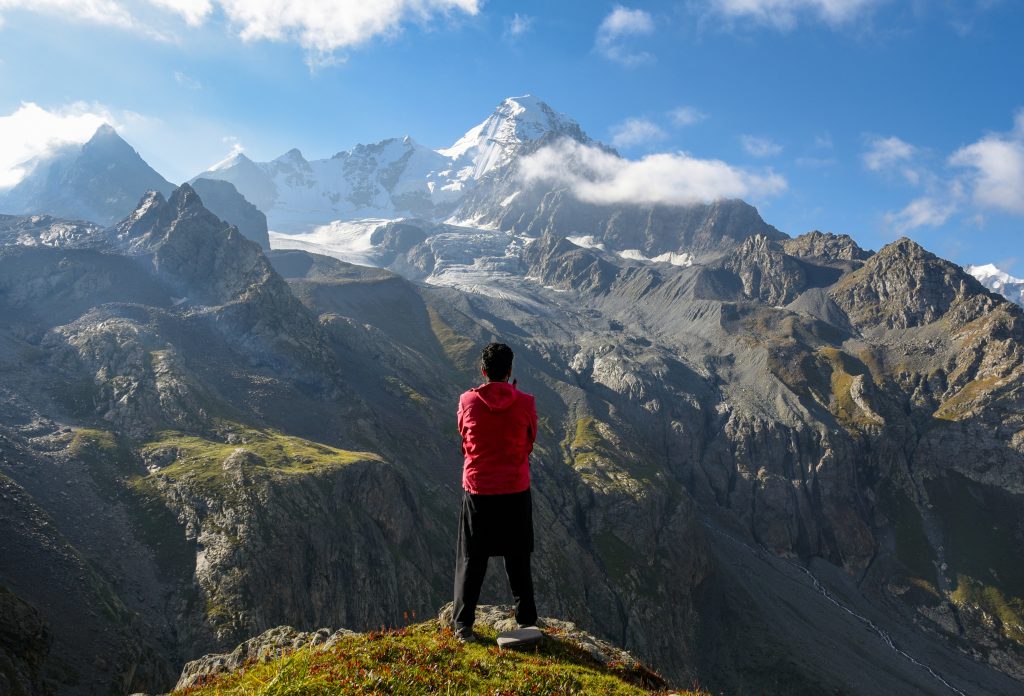
The clouds began to lift from Batin Peak, slowly revealing its majestic form. We exchanged excited glances every time the fog cleared a little, only for another cloud to roll in and obscure the view again. But as the sunlight hit the glaciers and icy face of the peak, they began to glisten, creating a breathtaking sight.
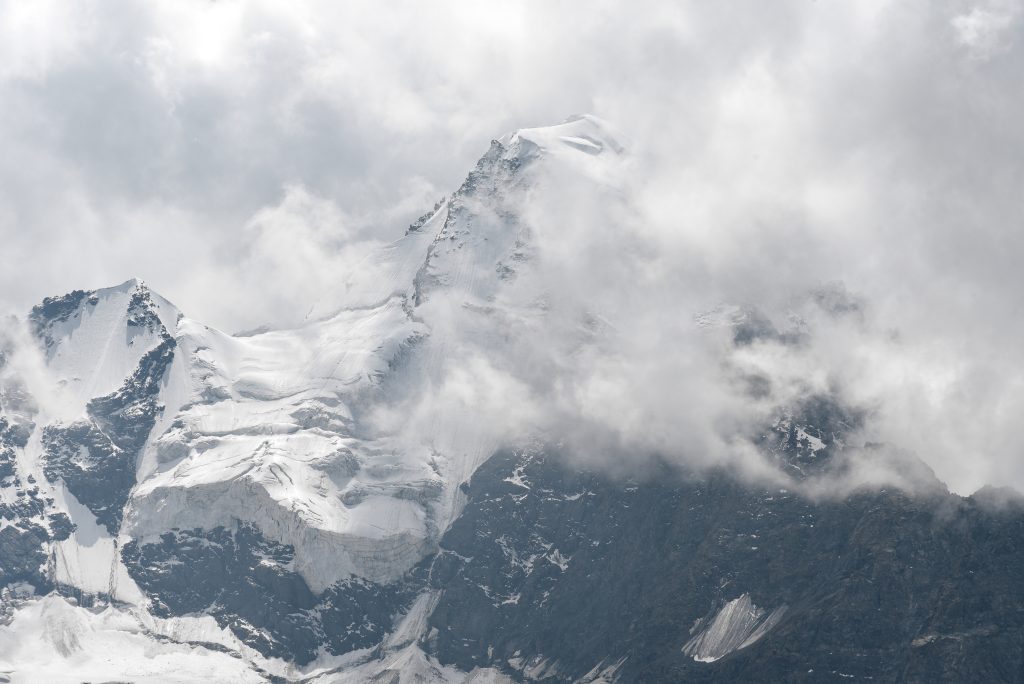
We waited patiently, and soon our prayers were answered. In about 30 minutes, the clouds dispersed entirely, leaving us with a clear, unobstructed view of the valley. Batin Peak stood tall and imposing, like a guardian watching over the landscape, its presence commanding respect and awe.

I pulled out my camera and started capturing the stunning scenes unfolding before us. Meanwhile, my brother eagerly prepared his drone, hoping to capture the beauty from above. But as I glanced over, I noticed he seemed upset and confused. When I asked what was wrong, he sighed and told me that his DJI drone app had stopped working—it wouldn’t even open. We tried troubleshooting, but nothing worked.
With a mix of frustration and acceptance, we packed the drone away and decided to just enjoy the moment. My brother switched to his mobile phone, recording videos and quickly losing himself in the majestic scenery. The breathtaking view seemed to make him forget all about the drone that he had carried so far, expecting to capture some amazing aerial footage.
The Jabba meadow greeted us with its vibrant gold and green, glistening dew drops, and a gentle stream dividing the landscape. The sun was now fully up, making the golden patches of grass, touched by September’s chill, shimmer under its light. Fanos and his brother, shepherds living in the meadow, waved to us, inviting us for tea. Their herds grazed peacefully, framed by the majestic Batin Peak, now bathed in morning sunlight. The sight left us mesmerized, and we spent a while capturing photos and videos.

After soaking in the beauty, we finally made our way to the shepherds’ hut, where they offered us tea. We mentioned our plan to visit the glacier at the base of Batin Peak, but Fanos warned that the route was slippery, long, and wouldn’t offer great views. Instead, he pointed toward a peak near Kandia Pass and told us about a hidden lake up there. With that, we quickly adjusted our plans and began hiking toward Kandia Pass.
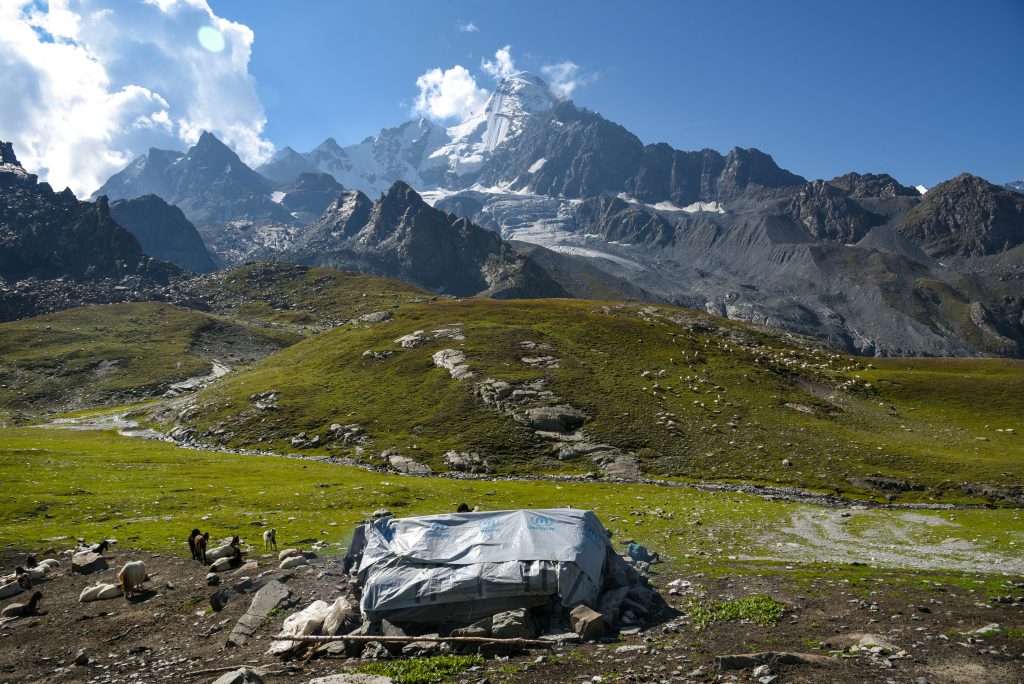
The trek from Jabba to Kandia Pass revealed breathtaking views as we gained elevation. With every step, more peaks surrounding Batin became visible, each offering a new perspective. The terrain, however, grew increasingly steeper, and the final stretch was particularly challenging due to loose scree. We ascended slowly, carefully placing each footstep to avoid slipping.
At around 10 a.m., we finally reached Kandia Pass, the high point that links Matiltan in Swat with Kandia Kohistan. Near the pass, a small lake shimmered with crystal-clear blue water, reflecting the grandeur of Batin Sar. The landscape on the Kandia side was rugged and sparse, lacking the greenery we had seen on the Swat side.




We continued by climbing a nearby trekking peak to take in the full panorama. While the view to the north was obscured by low clouds and fog, we could still make out the base glacier of Falak Sar, though its peak remained hidden. Mahodand Valley lay below, but its higher mountains were similarly shrouded in mist. On the Kandia side, peaks were also lost to the clouds, making the clear and striking view of Batin Peak all the more captivating.
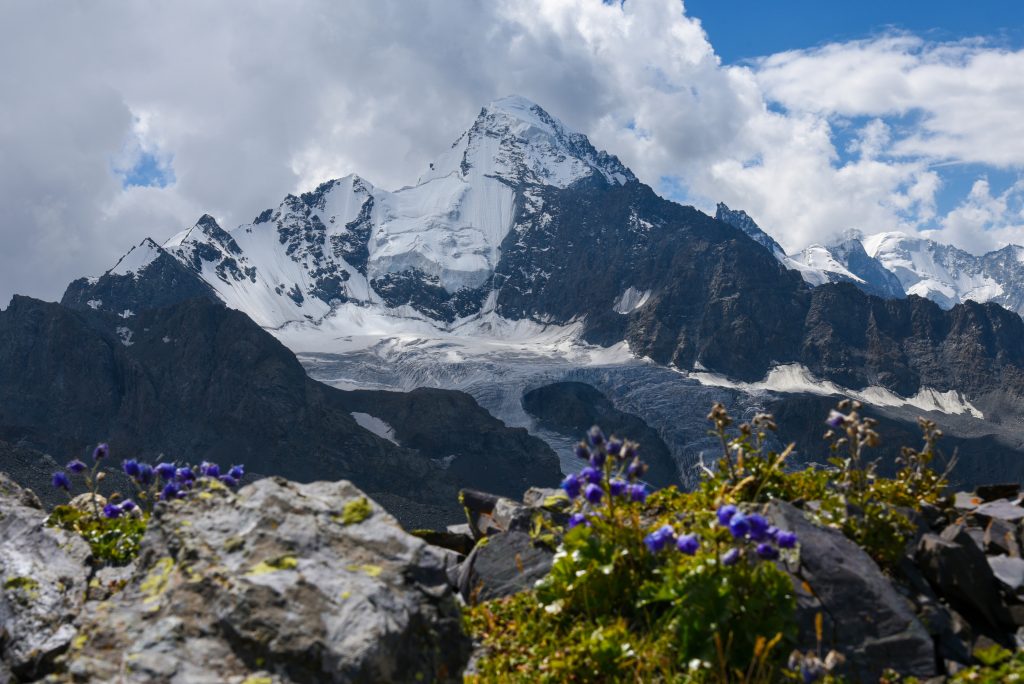
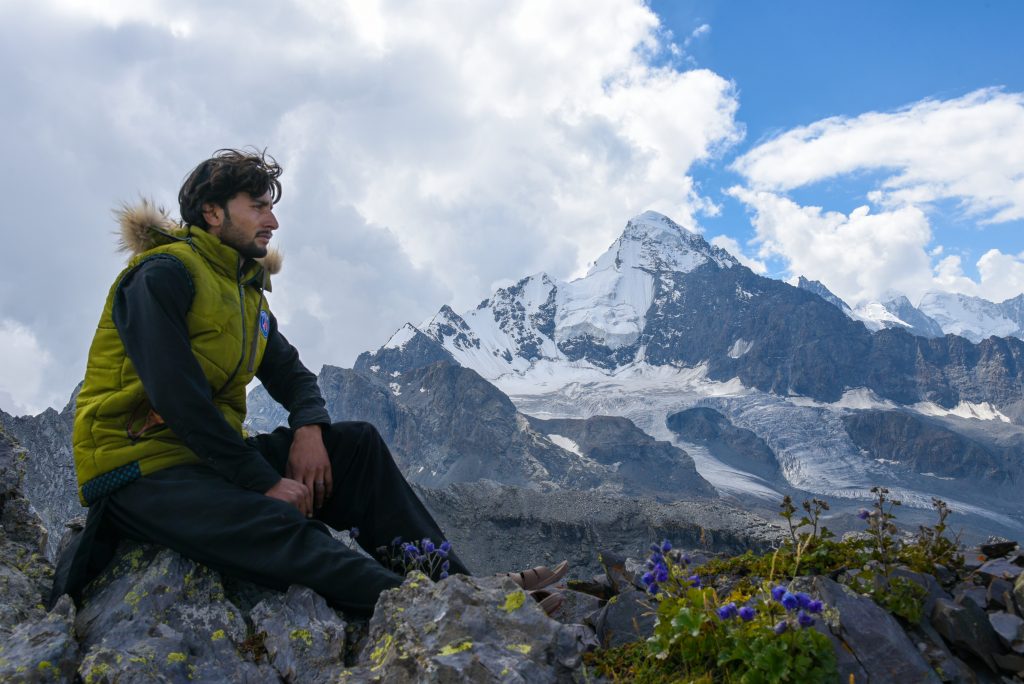
We sat silently atop the peak, soaking in the mesmerizing beauty of Batin Peak and the surrounding landscape. The scene inspired a sense of awe and gratitude, and we made a promise to return in June or July, when the meadows would be lush, full of flowers, and the rocky peaks would be draped in fresh white snow.
As we began our descent from the peak, the clouds once again started to gather around Batin Peak, making it play a game of hide and seek with us. The shifting clouds gave the peak an ethereal quality, and it was hard to pull our eyes away from the mesmerizing scene. But we knew we had a long way to go — about 25 kilometers back to Matiltan.

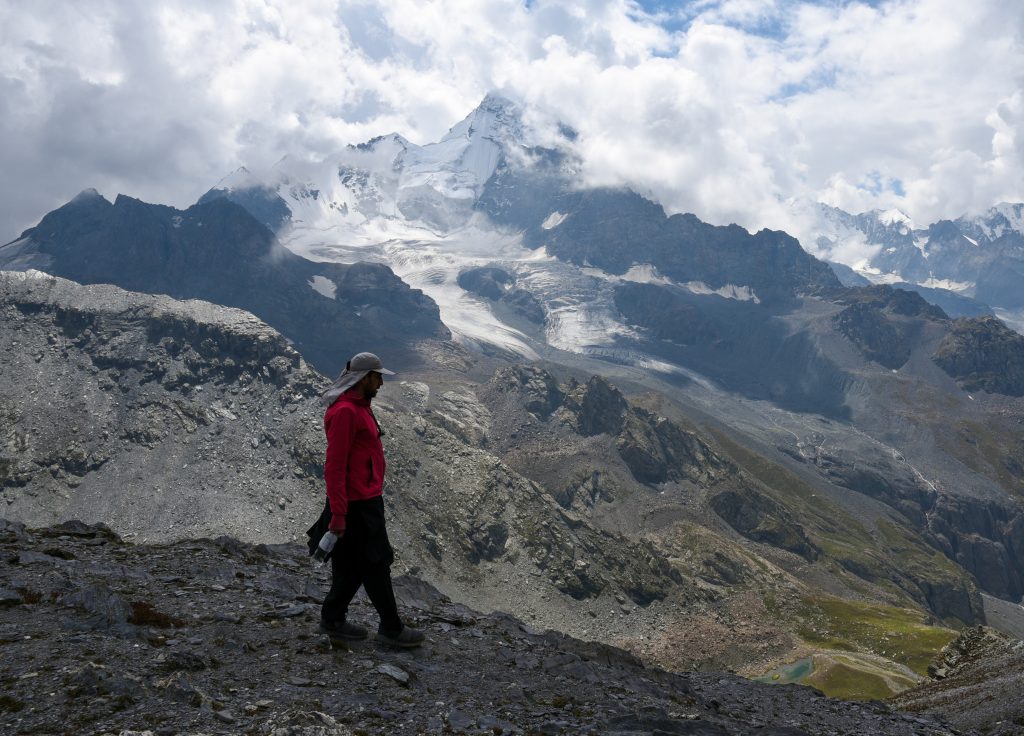
Reluctantly, we left the enchanting view behind and began our descent toward Jabba. The path down was much easier, and in about 30 minutes, we arrived back at the meadow. Fanos and his brother were still there, tending to their herds. We thanked them for their hospitality and the valuable guidance they had offered. Their kindness had made our journey smoother, and we were grateful. After our goodbyes, we headed back toward our campsite to prepare for the trek home.
After about 45 minutes of hiking, we finally reached our camp. Without wasting time, we began packing up our gear. Nazar and his father kindly offered us food, but we were in a rush, so we had to politely decline. Taj Malook, who had been so generous the night before, was out grazing his herds, so we didn’t get a chance to say goodbye to him.
We packed quickly, knowing we had a long journey ahead, and left for Matiltan. The weather was worsening, with clouds once again shrouding the surrounding mountains. Determined to make good time, we moved fast, barely speaking, focusing on reaching Matiltan before the weather deteriorated further. We also had to factor in the drive back to Qandil on the same day.
As we passed through Usman’s grazing area, we saw him still tending to his herds. He was surprised to see us return so soon and asked if we had reached the pass. When I told him we had, he was amazed. He complimented us on making the trek in such a short time, especially with our heavy backpacks, and joked, “If you gave me 20,000 rupees to go there, I still wouldn’t go!” We all laughed, thanked him for his help earlier, and continued on our way.
As we neared Matiltan, the rain began to fall, soaking us to the bone. Yet, instead of discomfort, it felt like a blessing—a fitting end to an extraordinary adventure. We had achieved everything we set out to do, returning safely and on time, despite the challenges.
With our hearts full of gratitude and our spirits uplifted by the incredible journey, we took one last look back at Batin Peak. After a short and pleasant rain shower now the weather was clear, and Batin stood tall, majestic as ever, watching over us as if waiting for us to pay our respects. We silently thanked the mountain for the unforgettable memories, the breathtaking views, and the hospitality of those who lived in its shadow. And with heavy hearts, we said our goodbyes, knowing that Batin Peak would always be waiting for our return.
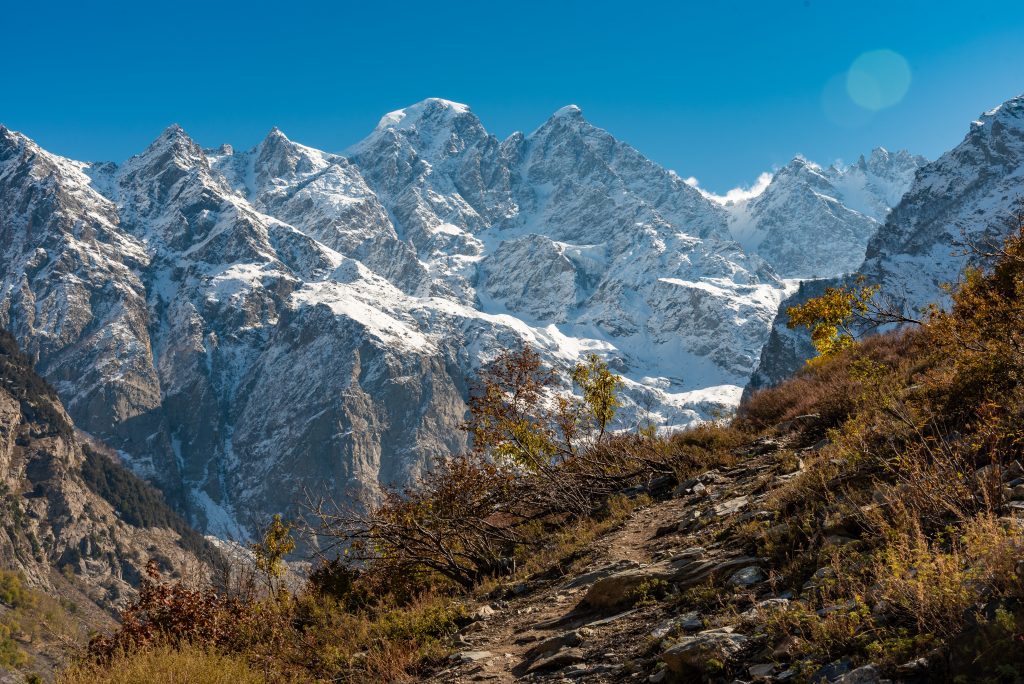
The adventure had come to an end, but the experiences would stay with us forever.

